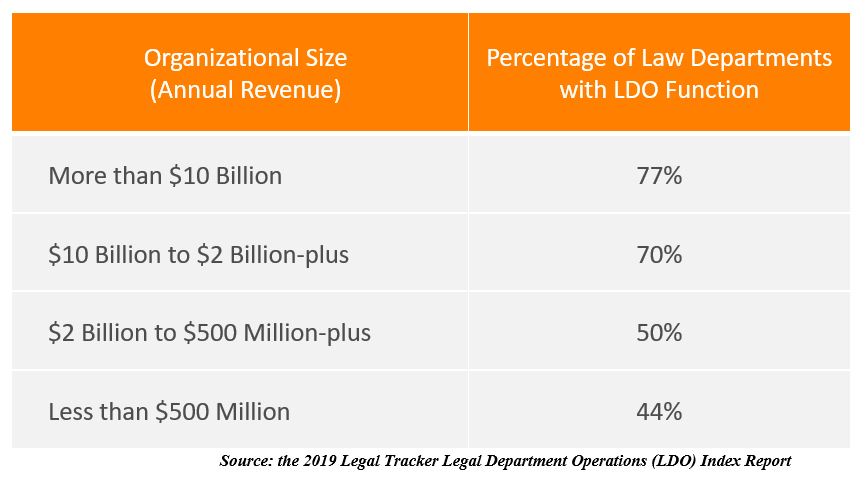In a new webinar, we look at how modern law departments are facing the many challenges of today's legal marketplace and moving past traditional boundaries
It’s become a cliché to say that today’s corporate law departments face daunting challenges — yet, given expanded legal responsibilities, ongoing regulatory developments, and pressures to operate like a business, the day-to-day operations of these departments continue to be challenging.
And expectations from corporate leaders that the company’s legal function will be more data-driven and proactive is increasing this feeling even more.
These challenges were taken up in a new webinar, The Modern Law Department: The Why and the How, (available on-demand), which looked at how modern law departments must evolve to meet these challenges, especially as their obligations rapidly move past traditional boundaries. As the webinar described, effective solutions that some corporate law departments are utilizing include: introducing a dedicated law department operations function, operating the department like a business, employing legal technology tools, and using data to drive decisions.
Introducing an LDO function
Savvy general counsel are turning to a variety of resources, processes, and tools to raise their departments’ games. Perhaps the most pervasive solution has been the introduction and rapid adoption of dedicated law department operations (LDO) functions and professionals to take over departments’ non-legal activities (see chart).
In the past, general counsel and other senior lawyers handled their departments’ administrative functions like budgeting, procurement, third-party management, and communications. Although important, these duties diverted in-house counsel from their core legal duties. Today, many law departments look to their LDO professionals to handle these tasks, which frees up the lawyers to do what they do best: provide strategic advice to the business, protect and advance their organizations’ legal interests, and manage risk.

Operating like a business
Central to the concept of operating like a business is financial management to better keep modern law departments more closely controlling their expenses, especially their outside counsel fees. Those fees are at the top of most law departments’ expense ledgers, and have long been accepted as a necessary, albeit expensive, cost of doing business.
However, as alternative fee arrangements replace billable hours and as law firms face competition from alternative legal service providers (ALSPs) and other market disruptors, modern law departments know they must get more control over their outside counsel expenses. (Indeed, gaining greater control over outside counsel costs was a top priority for 90% of law departments surveyed, according to the 2019 Legal Tracker LDO Index Report.)
Being strategic is another aspect of operating like a business. The activities of the law department should align with the organization’s strategic goals. This has pushed general counsel to reassess the allocation of work within their departments, prioritizing activities that support the company’s goals, de-emphasizing less important tasks, and reassigning or abandoning work that is low value-add, outdated, or unnecessary.
Yet another characteristic of operating like a business is the efficient delivery of legal services, relying on clear, concise, and comprehensive policies to govern the department’s activities. These policies, ranging from outside counsel guidelines to billing requirements to contract processing procedures, provide both lawyers and the company’s other business units with clear guidance on the law department’s operating principles and can eliminate wasted time, confusion, and uncertainty.
Adopting legal technology tools
Technology also plays a role in the evolution of corporate law departments by streamlining the delivery of department services internally and allowing departments to more efficiently manage their external costs. For example, e-billing and matter management tools can provide granular detail on outside law firm services and expenses. Many law departments also use budgeting and forecasting technology tools to support their enhanced financial management responsibilities.
Internally, many modern law departments have introduced client self-service portals to initiate and track law department tasks, prepare routine documents, and facilitate approval and signature processes.
These tools increase the speed of law department workflow while helping control quality, uniformity, and predictability, saving both internal and external expenses. They also allow department attorneys to concentrate their time and energy on the department’s material, rather than administrative, matters. To maintain their edge, modern law departments will need to continue exploiting these tools as they become more robust and sophisticated.
Using data-driven decision making
A final hallmark of modern law departments is their reliance on data to proactively inform their actions. Supplementing quantitative data extracted from their technology tools with qualitative data gathered from informal client interactions, formal organizational surveys, and third-party providers, modern law departments are synthesizing and analyzing their findings, identifying trends and issues, and attacking opportunities, problems, and risks.
They are also using this information to drive the decisions they make and the advice they provide. Finally, they are calling on this data to quantify and demonstrate the value they offer to their organizations.
The days of operating a corporate law department on auto-pilot, if they ever existed, are long-gone. Today’s law departments must meet their challenges with an array of resources, processes, and tools that enable them to be responsive, nimble, data-driven, and proactive.
Click here if you would like to learn more about legal operations in a Modern Law Department; or click here to learn more about legal services in a Modern Law Department.






